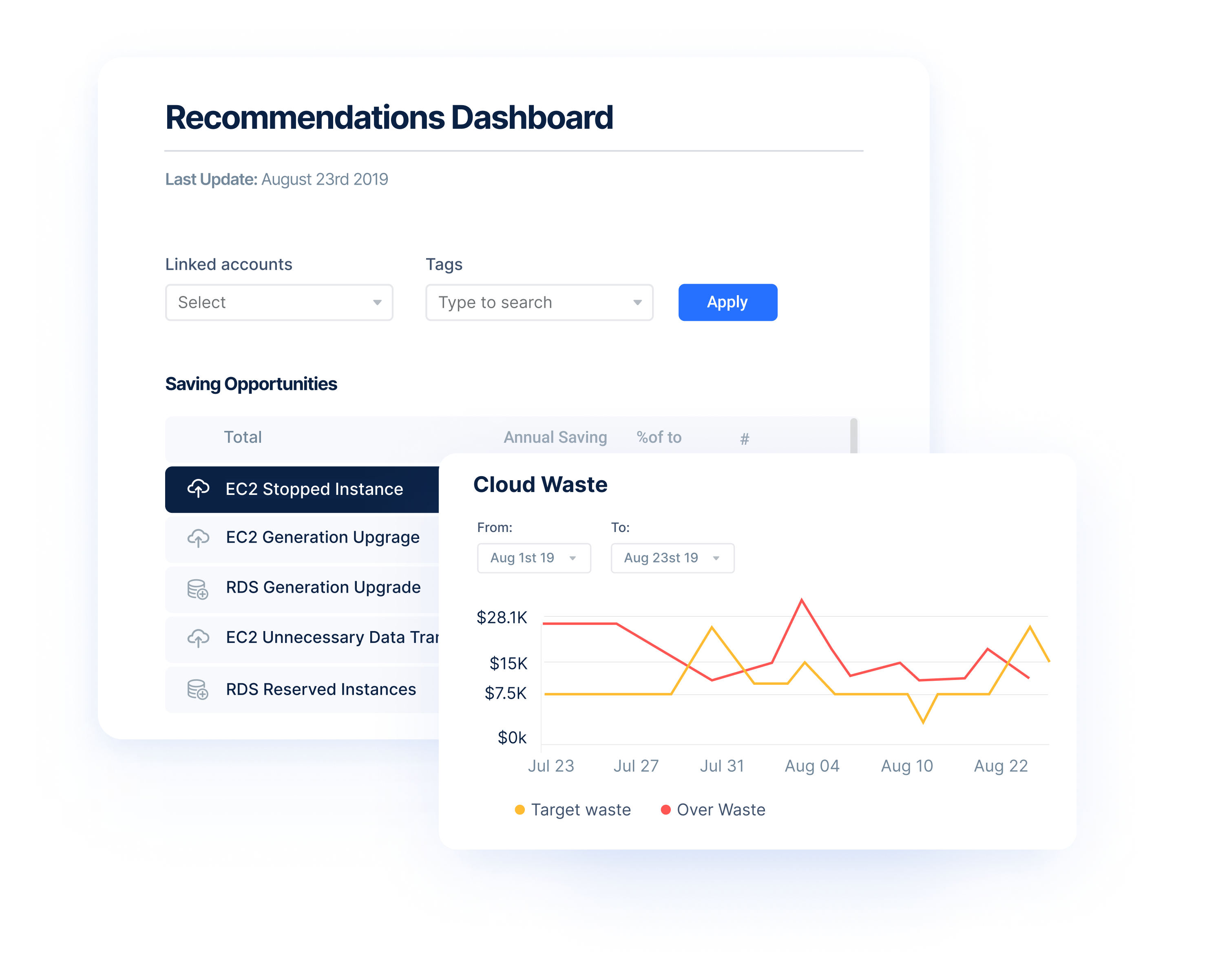As the market share leader in the public cloud, Amazon Web Services (AWS) offers over 200 featured services from data centers globally. One of its most powerful and commonly used services is Amazon Elastic Cloud Compute, or EC2.
EC2 provides scalable computing capacity in the AWS cloud, enabling organizations to develop and deploy applications faster and eliminating the need to invest in hardware up front. With EC2, developers have control of scalable computing resources with minimal friction, allowing them to quickly scale capacity, up and down, as requirements change.
While EC2 can make life easier for developers by providing resizable compute capacity, the costs associated with instances and features can quickly get out of control. Organizations should ensure they have a mature FinOps practice and cloud cost management tools in place in order to prevent overspending and unnecessary waste.
AWS EC2 instance types
Even for experienced engineers and FinOps practitioners, EC2 pricing can be incredibly complex. With hundreds of different instance types at various price points, it can be difficult to choose the best resource for your needs.
EC2 instances are grouped together into families. Each EC2 family is designed to meet a target application profile or use case:
General Purpose Instances
General-purpose instances provide a balance of computing power, memory, and networking resources and can be used for everyday workloads like web servers and code repositories.
Compute Optimized
Compute optimized instances are best suited for applications that benefit from high-performance processors.
Memory Optimized
Memory optimized instances deliver faster performance for workloads that process large data sets in memory.
Accelerated Computing
Accelerated computing instances leverage hardware acceleration and co-processors to perform complex calculations and graphics processing tasks.
Storage Optimized
Storage optimized instances are designed for workloads requiring high performance, sequential read and write access to large-scale datasets.
When considering the cost, each instance type above can vary by region or operating system selections.
EC2 cost drivers
Understanding the cost drivers of EC2 services is an important step to managing and controlling spend. EC2 pricing is based on a per-second billing paradigm. You pay only for what you actually use in one-second increments, with a minimum of 60 seconds. To maximize return on your investment, you should focus on ensuring your application uses EC2 compute resources as efficiently as possible, especially when running irregular or periodic processes like:
- Development and testing
- Data processing
- Batch processing
- Data analytics
- Gaming apps
EC2 cost drivers are influenced by a number of factors, some more well known than others. They include:
- Pricing model
- On-Demand
- 1- or 3-year term Savings Plans (save up to 72%)
- Spot Instances (save up to 90%)
- Reserved Instances
- Dedicated Hosts
- The instance family and size
- The instance processor architecture. AWS ARM architecture Graviton-powered instances tend to be more cost-effective.
- Intel
- AMD (save up to 10%)
- Graviton2 (save up to 20%)
- The underlying instance operating system (OS)
- Amazon Linux
- Windows
- Unix
- The region and availability zone
- Data transfer (data transfer in to EC2 from the internet is free, while transfer out of Amazon EC2 is billed per gigabyte)
- Additional supporting services and networking costs like CloudWatch (including Amazon EC2 Auto Scaling policies), EBS storage (you pay per volume) and ELB load balancing (you pay per load-balancer hour)
Optimize EC2 costs with Anodot
Anodot’s Cloud Cost Management solution makes optimization easy. It can easily connect to AWS, Azure and GCP to monitor and manage your spending. Even with multi-cloud environments, Anodot seamlessly combines all cloud spending into a single platform allowing for a holistic approach to optimization measures.
Anodot also offers specific easy-to-action cost-saving recommendations for EC2.
Amazon EC2 rightsizing
You pay for the compute you purchase whether you use it or not. Anodot looks at Amazon EC2 instances in use and identifies those with low CPU utilization. Businesses will save more by switching to a better-fit instance. Update to newer and more cost-effective instance generations as they are released.
- EC2 rightsizing
- EC2 operating system optimization
- EC2 generation upgrade
Amazon EC2 purchasing
- EC2 Savings Plans
- EC2 Reserved Instances
Amazon EC2 management
Terminate unused idle and stopped resources that will otherwise add to your bill.
- EC2 instance unnecessary data transfer
- EC2 instance idle
- EC2 instance stopped
- EC2 IP unattached
Anodot’s personalized insights and savings recommendations are continuously updated to consider the newest releases from major cloud providers, including AWS. Anodot helps FinOps teams prioritize recommendations by justifying their impact with a projected performance and savings impact.

Anodot learns each service usage pattern, considering essential factors like seasonality to establish a baseline of expected behavior. That allows it to identify irregular cloud spend and usage anomalies in real-time, providing contextualized alerts to relevant teams so they can resolve issues immediately.
Proprietary ML-based algorithms offer deep root cause analysis and clear guidance on the steps for remediation. Customers are already using Anodot to align FinOps, DevOps, and finance teams’ efforts to optimize cloud spending.
Accurate forecasting is one of the central pillars of FinOps and cloud cost optimization. Anodot leverages AI-powered forecasting with deep learning to automatically optimize cloud cost forecasts and enable businesses to react to changing conditions before impacting cost.





